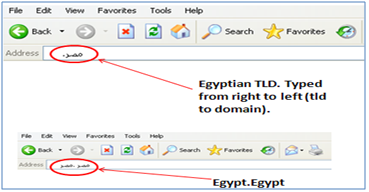First of all, let’s look at what an IDN is. An IDN (Internationalised domain name), is an Internet domain name that contains at least one label that is displayed in software applications, in whole or in part, in a language-specific script or alphabet. The Domain Name System, which performs a lookup service to translate user-friendly names into network addresses for locating Internet resources, is restricted to the use of ASCII characters, a technical limitation that initially set the standard for acceptable domain names. The internationalisation of domain names is a technical solution to translate names written in language-native scripts into an ASCII text representation that is compatible with the Domain Name System. Until recently, only partial or half IDN’s as I like to call them, have been in use.
The idea of an IDN has always been the same, in that it allows you to type a domain name in local characters, using a local keyboard, in your own country. The problem so far has been that the TLD itself has remained in Latin characters, which limits the user. Whilst the domain string itself can be typed in local characters, a problem remains in that the consumer must still insert Latin characters into their keyboard, to complete the fully qualified domain name and type the domain extension. For many, an IDN (Internationalised domain name) will not mean much. If you are living in a Russian speaking country and use a Cyrillic keyboard however, it becomes very important. Inserting foreign characters into your keyboard can be frustrating and time consuming. Now with the introduction and regular release of IDN top level domains, the domain space will now expand even further, allowing businesses to truly connect globally with local consumers in their own language.
What does this mean for brand owners? Well as an Account Manager I have helped many customers register their IDN’s. Now it is more important than ever to consider IDN’s as part of your brand protection strategy. Not all full IDN’s will be of value to everyone. It will be important to understand what markets you operate in? Do you translate your website into local languages and if so, which? What markets do you aim expand into? By allowing consumers to have a complete experience online, in their own language, you are able to increase your customer base and in turn revenue. Let’s consider Russia. The total English-speaking population is 5%, which leaves the rest of the population using Cyrillic as their primary method of communication. There are around 45 Million internet users in Russia, the majority of which will no doubt be using a Cyrillic keyboard. By tapping into this market, as a business the opportunities are vast. By investing now in the right IDN’s in the right markets, combined with localized content, the potential is clear. .рф was the first localised extension (IDN.IDN) made available from December 2009. Following suit are Saudi Arabia (.السعودية) and Egypt (.مصر). There are more IDN TLD’s to be released across the remainder of 2010, so please either speak to your Account Manager here at CSC, or, keep an eye on and subscribe to our blog for regular updates on this space and more.
Colin Darbyshire
Account Manager

